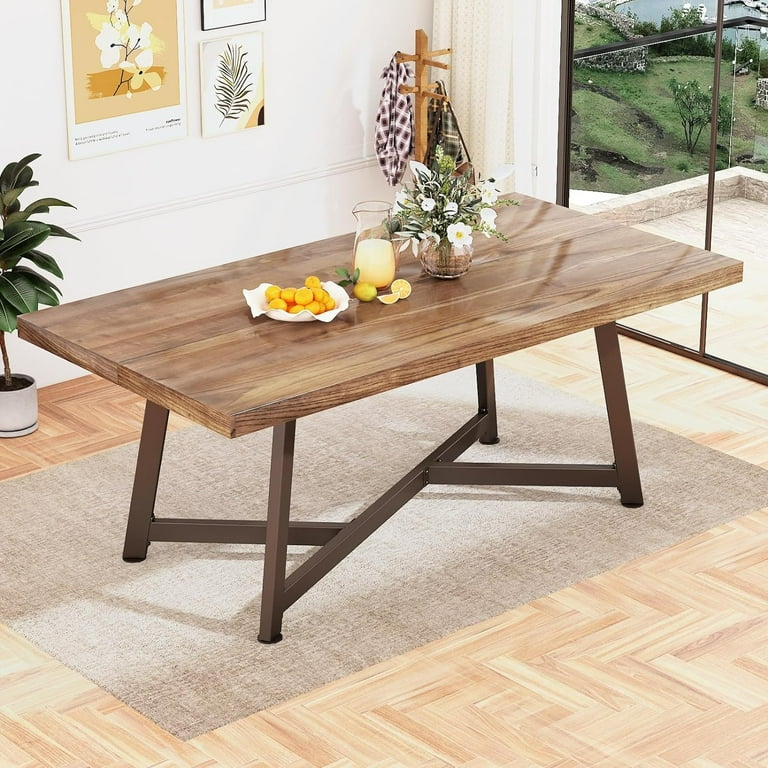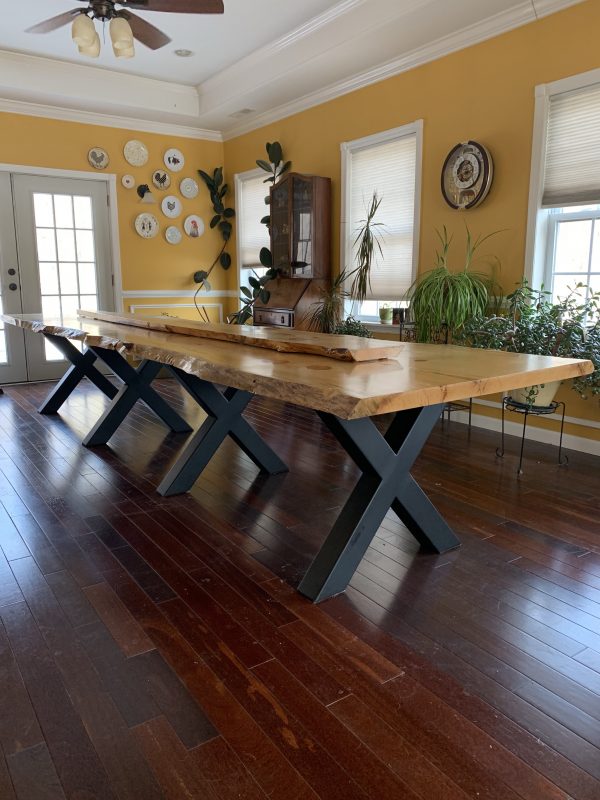The Impact of Dining Room Table Legs on Your Table's Overall Design
The Impact of Dining Room Table Legs on Your Table's Overall Design
Blog Article
From Typical to Modern: Discover the Ideal Dining Space Table Legs for Your Style
While classic styles such as cabriole and turned legs stimulate a feeling of classic elegance, contemporary designs like hairpin and geometric alternatives provide an opportunity for striking visual passion. As you think about these elements, the concern continues to be: how can you perfectly incorporate these diverse leg styles to produce an unified dining experience?
Comprehending Table Leg Styles
The selection of dining-room table leg styles can substantially affect both the aesthetic appeals and functionality of the area. Each leg design adds special practical attributes and aesthetic aspects, providing to diverse design preferences and usage needs. Comprehending these designs is crucial for selecting the right table that straightens with your total interior decoration vision.
As an example, tapered legs use a tidy, timeless look that can enhance a space's style, while stand bases supply stability and maximize legroom, making them optimal for smaller sized spaces. Hairpin legs, a characteristic of mid-century modern-day layout, introduce an industrial panache, permitting for a ventilated, open feel. In a similar way, trestle legs stimulate rustic appeal, offering durable support and a sense of eternity.
Wood legs can bring heat and structure, whereas steel choices often communicate a streamlined, contemporary ambiance. Ultimately, comprehending table leg designs is necessary for developing a cohesive dining location that reflects personal design while making certain functionality and comfort.
Traditional Table Leg Options
When picking dining-room table legs, typical alternatives typically embody ageless style and craftsmanship. These designs show an abundant heritage and a commitment to high quality, making them excellent for those who appreciate traditional visual appeals.
One of the most famous traditional leg designs is the cabriole leg, characterized by its graceful rounded form. This style typically includes attractive carvings and is most typically located in Queen Anne and Chippendale furnishings. An additional preferred alternative is the transformed leg, which boasts a collection of smooth, rounded forms that provide a traditional appearance while preserving security.
In addition, the straight leg, while easy, provides a durable and unadorned framework that can mix flawlessly with a variety of tabletop styles. For those drawn to ornate outlining, claw-and-ball feet legs evoke a feeling of magnificence and can serve as a stunning centerpiece in any eating area.
Lastly, pedestal bases, although not strictly legs, supply an alternative standard alternative that permits sufficient legroom and can be wonderfully carved. Each of these traditional leg styles adds to the general setting of a dining space, marrying function with aesthetic allure.

Modern Table Leg Designs
Modern table leg designs supply a diverse variety of designs that highlight tidy lines and cutting-edge products. These designs typically prioritize performance while working as striking focal factors within a dining room. Minimalist looks prevail, with legs crafted from materials such as metal, glass, and engineered wood, which add to a airy and contemporary feeling.
One popular design is the barrette leg, characterized by its slim, conical structure that supplies security without overwhelming the table top (dining room table legs). This design is commonly found in mid-century modern-day furniture and can effortlessly match numerous dining table forms. An additional trend is the usage of geometric forms, where legs may handle angular or asymmetrical forms, including aesthetic interest and a touch of creativity

Blending Styles for Special Areas
Commonly, home owners look for to develop distinct dining areas that reflect their personal style by blending numerous design aspects. This technique enables the unification of diverse appearances, resulting in a harmonious yet unique atmosphere. For instance, combining a rustic wooden table with smooth, modern steel legs can produce an attractive comparison that boosts the space's general appeal.
Additionally, incorporating vintage table legs with modern tabletops can evoke a feeling of background while maintaining a modern perceptiveness. Such mixes not only display private taste yet likewise urge creative thinking, allowing property owners to curate a space that really feels both personal and welcoming.
Color plays a crucial duty in this blending procedure; choosing table legs that enhance or contrast with the existing color design can improve aesthetic rate of interest. For instance, whitewashed legs can soften the boldness of a dark table surface, creating a balanced visual.
Tips for Selecting the Right Legs
Picking the right table legs is vital for attaining both performance and visual charm in your eating space. Begin by taking into consideration the overall style of your area. Traditional settings take advantage of legs that feature complex makings or turned designs, while modern spaces may require streamlined, minimalist styles.
Following, assess the height and security of the legs. dining room table legs. Standard dining tables range in between 28 to 30 inches in elevation, so guarantee the legs match this dimension for convenience. Additionally, robust products, such as wood or metal, can improve security and long life
Review the leg shape as well-- choices consist of directly, tapered, or stand layouts. Straight legs provide a traditional appearance, while conical legs can include a touch of style. Pedestal bases provide ample legroom and are suitable for smaller sized spaces.
Conclusion
In recap, selecting the ideal dining space table legs needs cautious factor to consider of both modern and conventional styles. Traditional options such as cabriole and transformed legs offer timeless elegance, while his response modern layouts like barrette and geometric shapes offer a contemporary touch. By harmonizing leg style, elevation, and product with the general decor, a natural and welcoming environment can be accomplished. Ultimately, the chosen table legs must show the preferred aesthetic, improving the dining experience within the room.
The variety of eating space table leg styles can dramatically influence both the looks and performance of the room. Eventually, understanding table leg designs is necessary for creating a natural dining location that reflects individual style while making sure usefulness and convenience.One of the most iconic typical leg styles is the cabriole leg, identified by its elegant rounded form. Straight legs provide a timeless look, while conical legs can add a touch of beauty.In summary, choosing the excellent eating space table legs calls for cautious factor to consider of both modern and standard designs.
Report this page